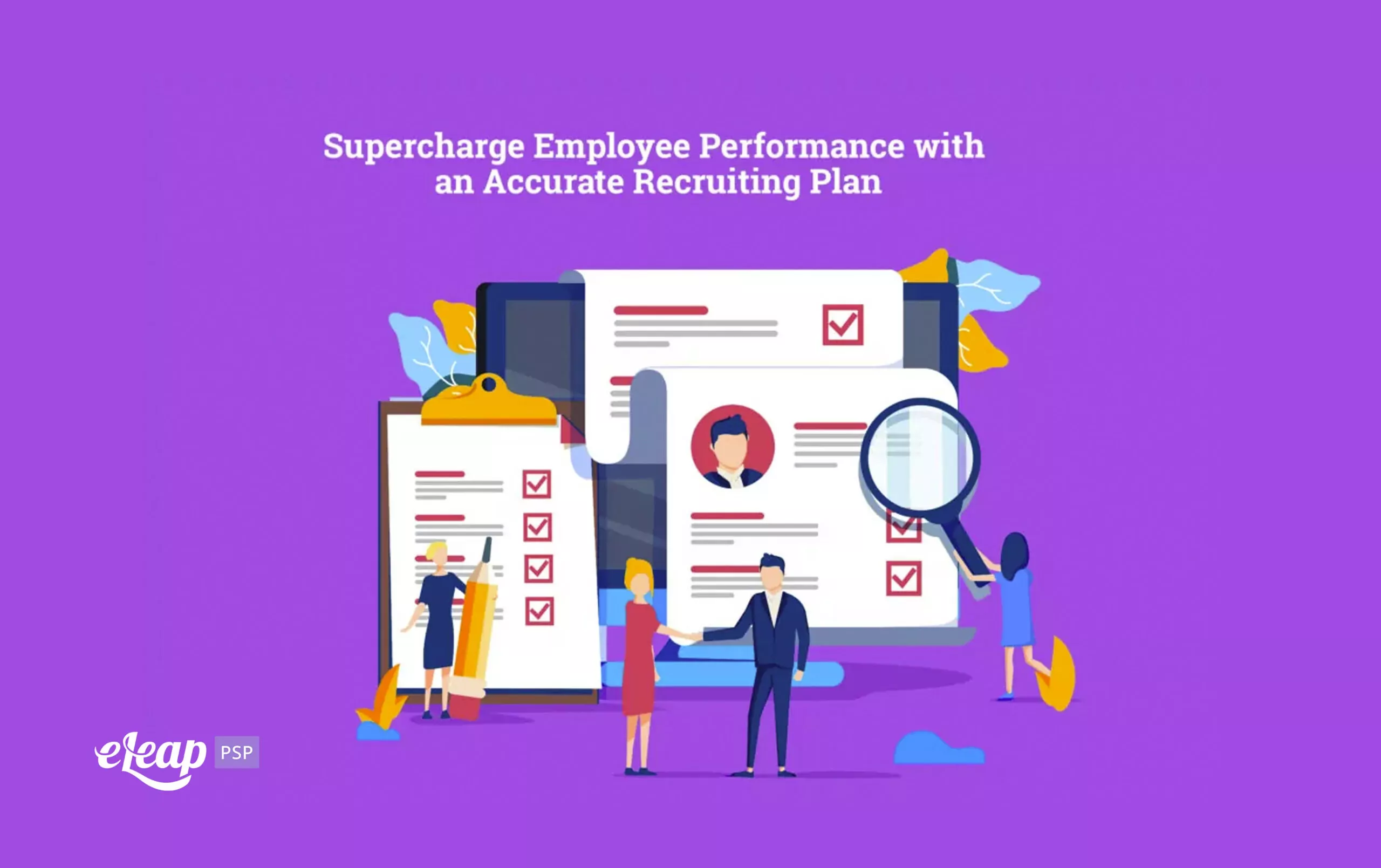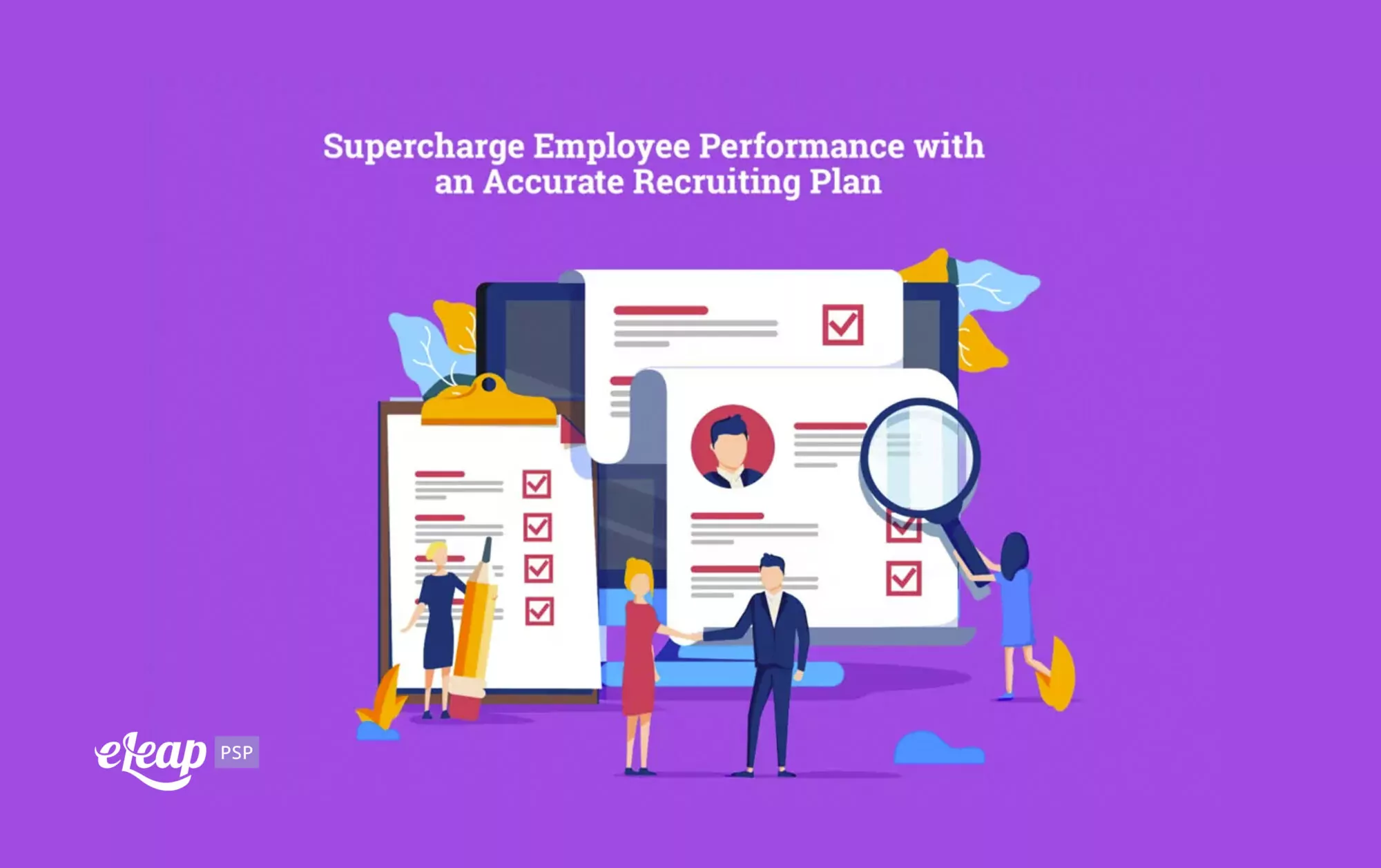Supercharge Employee Performance with an Accurate Recruiting Plan

Performance management is too often seen as a reactive process. Managers focus on handling the performance of existing employees – course-correcting bad decisions, weeding out unwanted behaviors, and continually aligning actions and decisions with company goals. While that view is understandable, it’s also the source of a lot of wasted time, energy, and money.
It would be so much simpler to ensure that you’re hiring the best person for the position from the very beginning. That ensures a minimal need for course correction, safeguards against unwanted behaviors, and more. Of course, achieving that “best fit” for each position can be challenging, but that’s where your recruiting plan comes in. When correctly formulated, this can be one of the most powerful performance management tools at your disposal.

Why You Need a Recruiting Plan
It’s natural to wonder why there’s a need for a recruiting plan in the first place. Doesn’t a job description and following a stepped interview process guarantee the same results? Actually, that’s not the case. Did you know that interviews only increase your chances of finding the right employee by 2%? That’s just one of the missteps in the hiring process you might be making, but assuming that interviews are the key to success is a major cause of problems down the road.
A recruiting plan, when properly constructed and eliminated, helps ensure that you get the right candidates in the hiring funnel to begin with, rather than relying on subjective opinions and the chance to weed them out during the interview process. What goes into creating an accurate recruiting plan, though? It’s really all about laying the groundwork with a checklist that will guide your recruiting, interviewing, and onboarding efforts.
Your Recruitment Planning Checklist
A recruitment planning checklist provides you with the framework necessary to help ensure success in your hiring efforts. It’s not a silver bullet, of course. It’s a framework – something to build on – not the hiring process itself. With that being said, with a little due diligence and commitment from HR as well as management, it can be an invaluable tool that enables you to hire more accurately. That in itself can result in:
- Better engagement off the bat because employees are better suited to the position
- Improved loyalty because the employee is a better fit for the organization
- Increased ability to move up within the organization thanks to a more defined understanding of strengths
So, what does the checklist look like? Below, you’ll find a bulleted list of steps, and then we’ll discuss each of those in greater detail:
- Is a new hire necessary?
- What characteristics are needed?
- Where will you post job listings?
- Who’s interviewing?
- Set the right phone screening questions.
- Create the right interview questions.
- Conduct the right pre-employment assessments.
- Know the interview question answers you want to see.
With the list itself out of the way, let’s dive into each topic.
Is a New Hire Necessary?
The first consideration is the most important. Do you really need to hire a new employee? Is this something that can be addressed by promoting existing talent? If that’s the case, will there be an in-house employee to take that newly vacated position? What about the next? Ultimately, this may eliminate the need for hiring a new employee entirely or allow you to hire for a much lower position while promoting from within.
Know the Characteristics
What do you want to see in a new hire for a particular position? What talents, strengths, aptitudes, and experiences would a successful job candidate have? It’s tempting to throw everything into this, including the kitchen sink, but it’s important to have a realistic view. You’re unlikely to find a “wonder employee”. Instead, use your own experience plus the job specifications to help you determine what characteristics to seek.
Job Listing Locations
Where will you post your job listing? Know this ahead of time so that when the listing is created, you can hit the ground running. Base your decision on the size of the candidate pool with the skills, experience, and knowledge that you need.
Who Will Handle the Interviews?
Interviewing is critical and it must be handled by the right people. In many instances, you’ll need multiple employees to interview a single new hire. Each one will look for and assess different characteristics and qualities, including:
- Technical skills
- Fit for the culture
- Job fit
Phone Screening Questions
Before going too far in the recruiting process, weed out poor fits with a phone screening. Make sure you have screening questions that help you eliminate unwanted characteristics, help surface critical strengths, and more.
Interview Questions
After the phone screening comes an in-person (or virtual) interview. What questions will you ask during this process? Most of your questions should be behavior-based and should help you understand how an employee will act or perform in specific situations. Make sure to create questions specific to each interviewer’s area of focus, such as culture, technical abilities, etc.
Choose Your Assessments
Will testing via your LMS be necessary before or during the hiring process? This can help to eliminate some poor fits, but the right assessments are critical. It’s also important that your testing is fair and equitable.
Assessing Candidates
Finally, make sure that your team of interviewers has the right tools to assess the job candidates. This includes identifying the right questions and answers, but it goes deeper – does the candidate have the characteristics you identified in the second step?
Hire with Confidence
While the recruiting plan we’ve outlined above isn’t a guarantee of the right hire, it’s a framework that will help you achieve success. Use the checklist to help ensure that you hire the right talent in the first place. Doing so will improve performance, fit within the culture, and help achieve mission-critical goals for the organization. Combine this with modern performance management methodologies such as regular check-ins and conversations, and you’ll find that employees at all levels perform better, supporting improved outcomes.